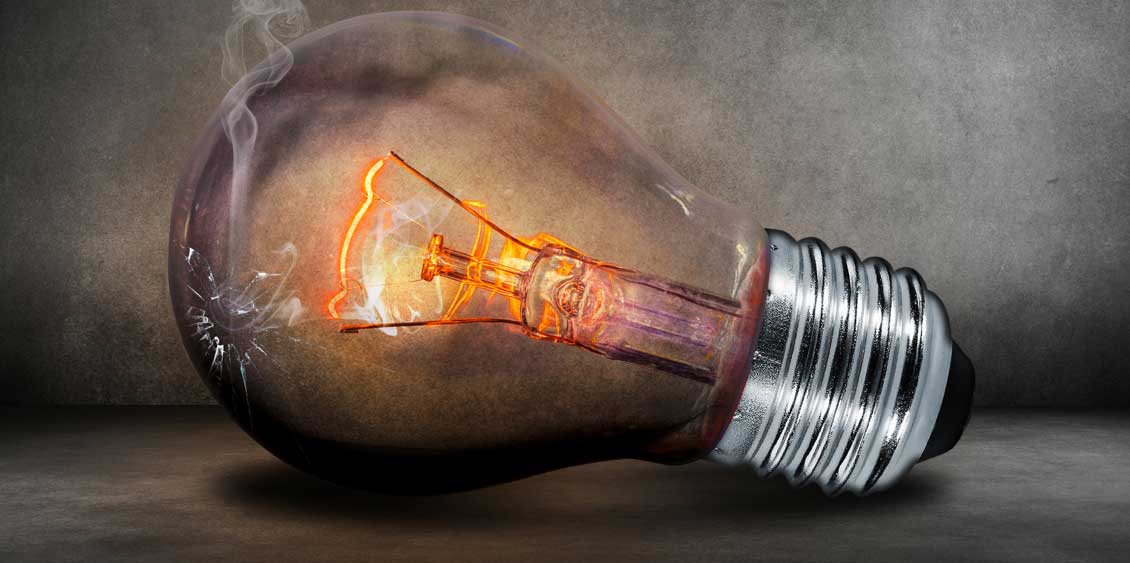
It seems that Thomas Edison would approve. His most famous creation, the incandescent light bulb, has recently been the subject of research that has led to the discovery of a means to significantly boost its energy efficiency. This strategy makes use of nanoengineered mirrors to repurpose a significant portion of the heat that is generated by the filament and transform it into additional visible light. Even while modern incandescent bulbs are not yet available for purchase, their energy efficiency is already almost on par with that of commercially available LED lights, but at the same time they are able to keep their traditional, pleasant glow.
Shawn-Yu Lin, an electrical engineer and optics expert at the Rensselaer Polytechnic Institute in Troy, New York, remarked that the work had "great craftsmanship." It has been brought to his and others' attention that there is ample space for additional improvement of the mirrors, which might ultimately push the efficiency of the bulbs well beyond what is conceivable with the lighting technologies that are available now. Because lighting accounts for 11% of total power consumption in the United States, any such improvement has the potential to significantly reduce overall energy consumption and, by extension, the amount of carbon dioxide emissions that contribute to climate change.
Since Thomas Edison initially invented incandescent lights, there has not been much of a shift. In order for the bulbs to function, energy is passed through a winding filament made of tungsten. Because of the winding and winding path, the electrical resistance that the moving electrons must overcome is increased, which results in the filament being heated to approximately 3000 K. At that temperature, the filament emits a light that is warm, yellowish white in color, and is characteristic of the light that is produced by light bulbs.
However, only about 2% of the energy that is supplied into an incandescent light bulb is radiated at wavelengths that can be seen by the human eye. The majority of its output consists of longer wavelengths of infrared (IR), and this energy is squandered as heat. There are other technologies that perform marginally better. LEDs normally achieve an efficiency of between 5% and 15%, whereas compact fluorescent bulbs typically achieve an efficiency of between 7% and 13%. However, to this point, these sorts of bulbs have not been successful in producing the soft white light that the vast majority of customers desire.
Researchers have attempted to increase the efficiency of certain light emitters by sculpting the surface of the emitting material with nanostructures designed to emit more energy as visible light. These efforts have been made in an effort to improve the overall efficiency of the light emitters. However, the extremely high temperature of the tungsten filament in incandescent light bulbs causes such nanostructures to disintegrate almost instantaneously.
Instead, researchers at the Massachusetts Institute of Technology (MIT) in Cambridge, led by physicists Ognjen Ilic, Marin Soljai, and John Joannopoulos, set out to improve the efficiency of incandescent light bulbs with the assistance of an intricately structured material known as a photonic crystal, which would be more stable because it would sit apart from the filament. Photonic crystals have the ability to perform the functions of both filters and mirrors. They will allow certain wavelengths of light to pass through while reflecting other wavelengths. In order to accomplish this, the MIT group set out to design photonic crystals that could transmit visible light while simultaneously reflecting IR photons. It was hoped that the filament would be able to reabsorb the IR photons, which would result in some of the energy being reemitted as visible light.
The researchers began the process of making their photonic crystals by beginning with glass sheets that were one millimeter thick. They then deposited ninety layers of tantalum oxide and silicon dioxide in alternating patterns. Because it reflects infrared light but not visible photons, this mixture was selected for use. The team relied heavily on comprehensive computer modeling to arrive at an accurate estimate of the required thickness of the layers.
In addition to this, the tungsten filament inside the light bulb needed to be redesigned. They eliminated the need for the spiral wire by making what seems to be a thin sheet of tungsten by repeatedly folding a thin tungsten ribbon back and forth. Electrons continue to travel in a winding path, which ensures that they are met with a high level of electrical resistance. This, in turn, causes the metal to become heated and glow. However, because the tungsten sheet has a greater surface area than before, it is now much simpler for the metal to absorb more IR photons that are reflected by the photonic crystals.
After doing so, the group activated the power supply and then surrounded the sheetlike tungsten emitter with two sheets of the glass-coated photonic crystals. According to what was published today in Nature Nanotechnology, the crystals let almost all of the visible light pass through while reflecting the majority of the infrared photons back to the emitter, where they were reabsorbed. The energy recycling led to an overall improvement in the bulb's efficiency, which ultimately reached 6.6%, or three times that of standard light bulbs.
That places them even further down the efficiency scale than they were before for both LEDs and compact fluorescents. However, according to Alejandro Rodriguez, an electrical engineer and an expert on photonic crystals at Princeton University, "I think they can do even better than this." [Citation needed] Rodriguez explains that the photonic crystal mirrors developed at MIT would likely be even more effective at reflecting infrared light if they were constructed using a greater variety of materials and incorporated a more intricate design. In spite of this, he acknowledges that "this is a wonderful first step."
According to Ilic and Soljai, with further engineering it may even be possible to reach efficiencies of 40%, which is significantly higher than what LEDs that are now available on the market can muster. They are considering using a similar strategy in order to improve the electrical conversion efficiency of devices known as thermophotovoltaics. These devices make use of sunlight in order to heat tungsten, which then emits light at a wavelength that can be converted to electricity in an efficient manner by a solar cell. In order for either application to be successful, researchers will need to demonstrate that they can produce and manufacture photon recyclers affordably enough for it to be worthwhile to include them. In the event that the strategy lives up to its promise, cutting-edge photonics may be able to breathe fresh life into Edison's luminous filaments.

